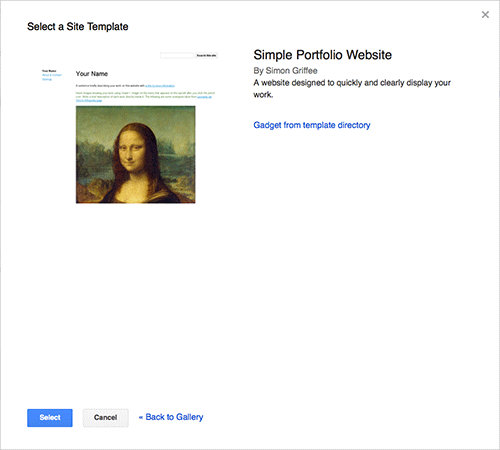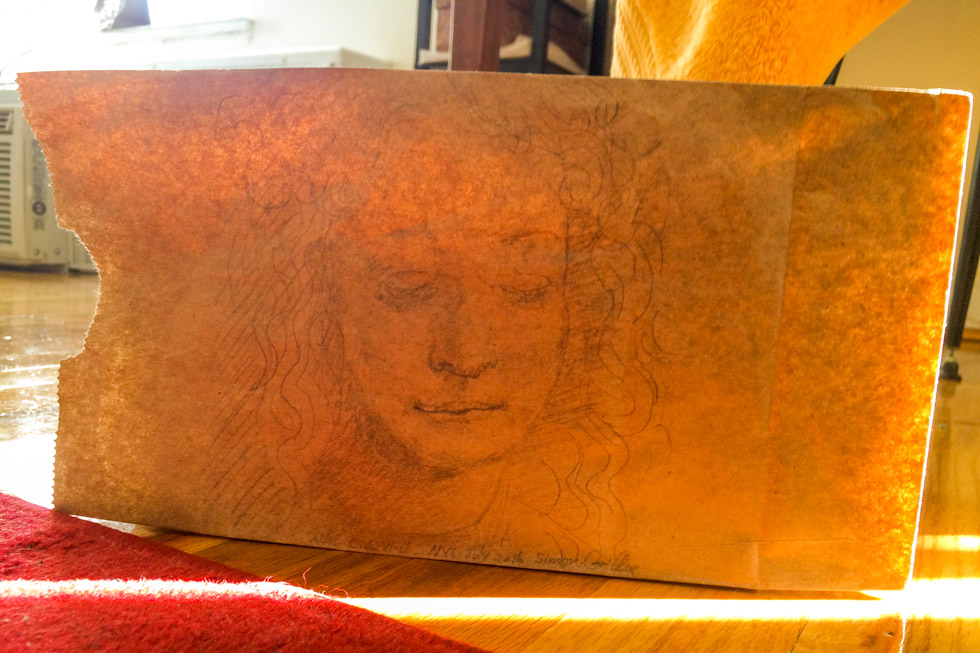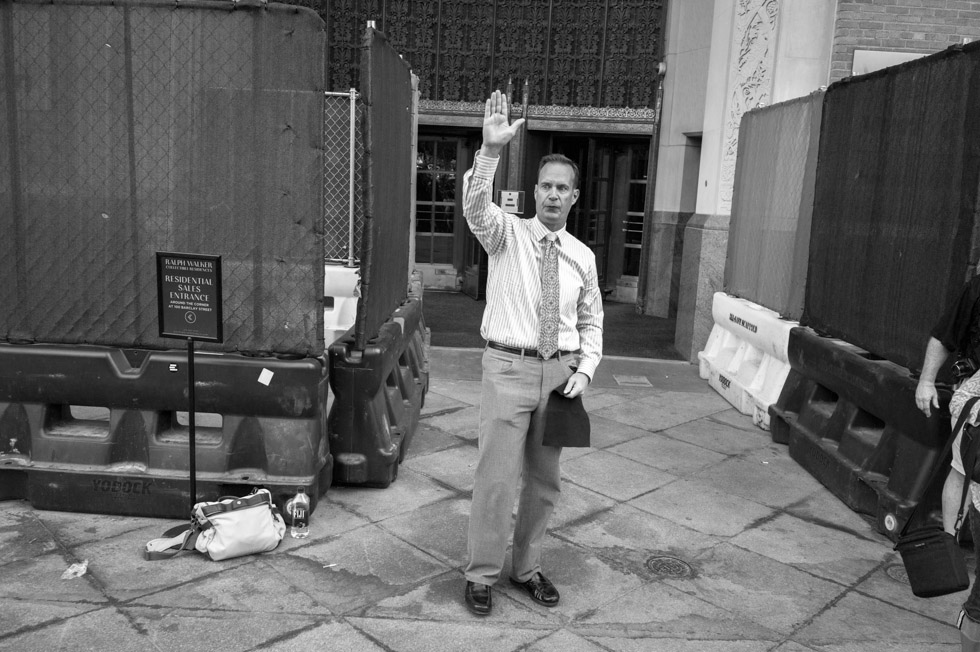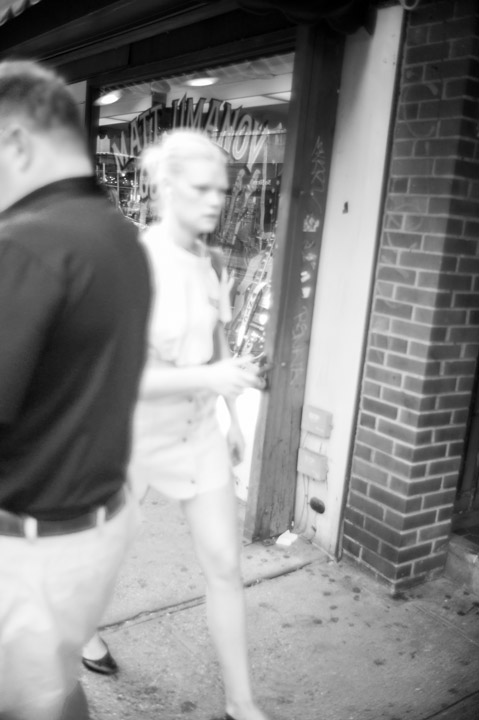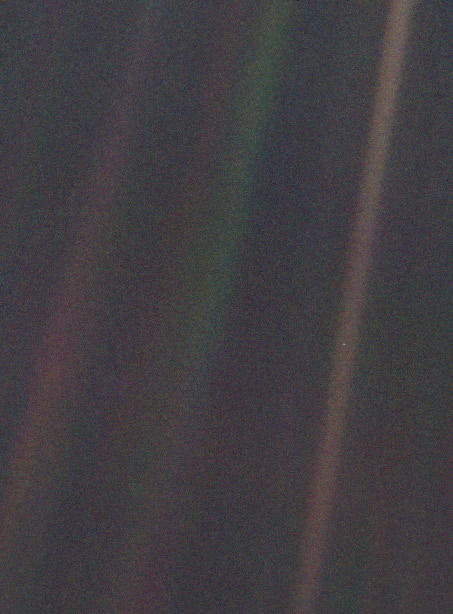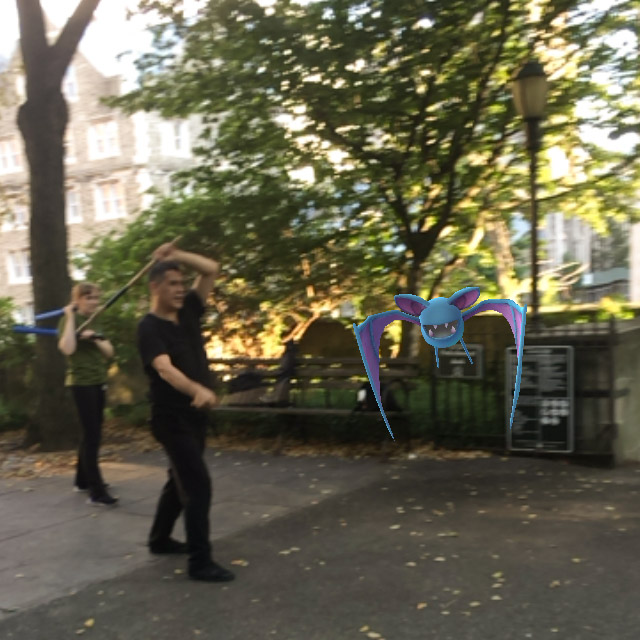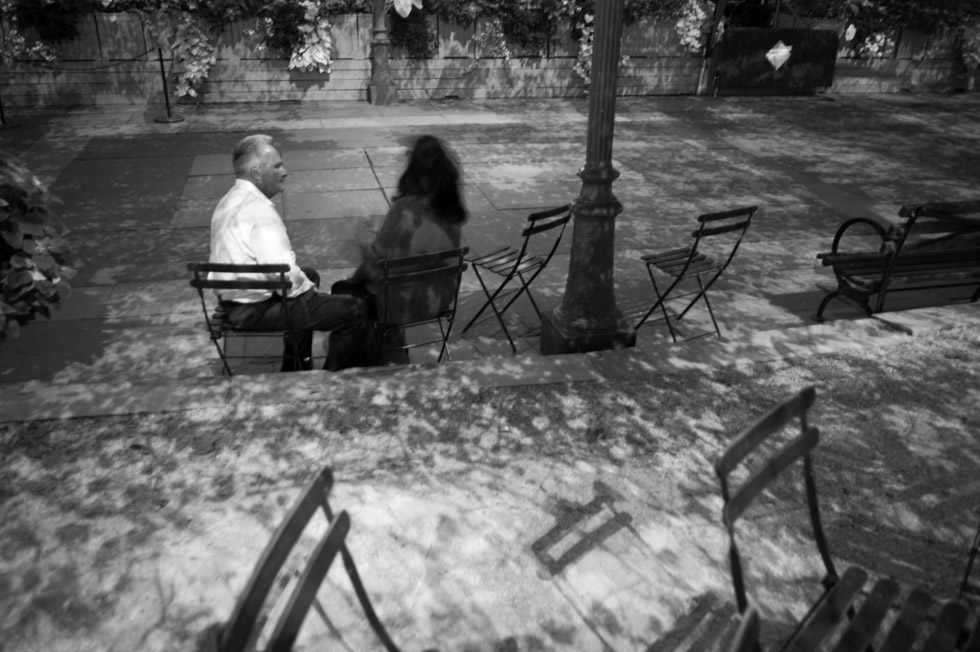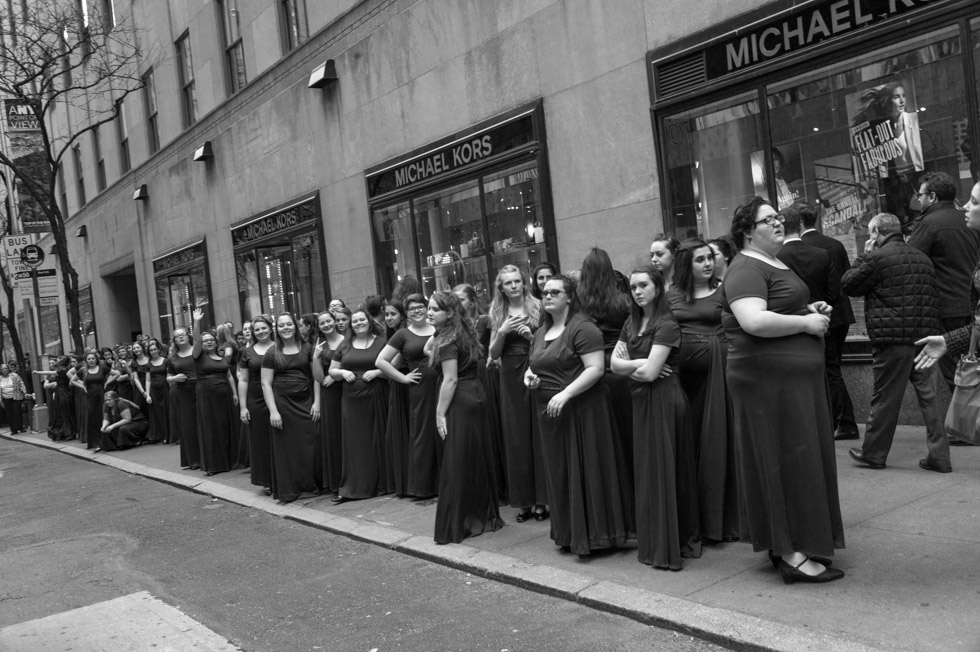
Published 2016 July 31
By the way, you should really go watch the new Star Trek (Beyond) — a film with much-needed optimism, focussed on unity and going beyond our reptillian instincts of agression, fear and violence. McCoy and Spock’s characters are at their best and I feel the story arc is almost perfect.
The film was particularly poignant given the tragic death of Anton Yelchin, who played Chekov, and Leonard Nimoy’s passing last year.
From The Galileo Project website’s page on Galileo’s drawings of sunspots:
In 1612 during the summer months, Galileo made a series of sunspot observations which were published in Istoria e Dimostrazioni Intorno Alle Macchie Solari e Loro Accidenti Rome (History and Demonstrations Concerning Sunspots and their Properties, published 1613). Because these observations were made at appoximately the same time of day, the motion of the spots across the Sun can easily be seen.
Here’s an animated GIF created from the video MPEG file made from 35 of Galileo’s drawings. I used Photoshop → Video Frames to Layers → Save For Web with a lossy setting to reduce file size:
Toggle Moon Animation
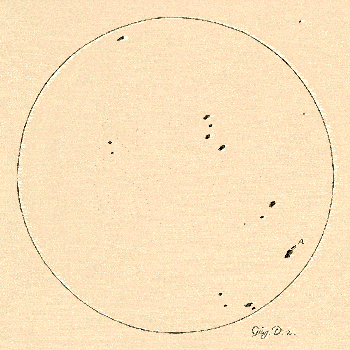
Galileo also knew about our galaxy:
What was observed by us in the third place is the nature or matter of the Milky Way itself, which, with the aid of the spyglass, may be observed so well that all the disputes that for so many generations have vexed philosophers are destroyed by visible certainty, and we are liberated from wordy arguments. —Galileo Galilei in Starry Messenger (Sidereus nuncius), 1610.
And his discovery that our moon is not smooth, but irregular and cratered like Earth — and that there are countless stars beyond the ones we see with unaided eyes — brought the enlightenment of science to our species. Edward Tufte, in Beautiful Evidence, page 97 (emphasis mine):
The Starry Messenger, published in March 1610, announced discovery of craters on the moon, a multitude of stars beyond those few seen by unaided eyes, and the 4 satellites of Jupiter. More importantly, the book “told the learned community that a new age had begin and that the universe and the way in which is was studied would never be the same.” From then on, theories about the universe had to be tested against the visual evidence of empirical observation. This is the forever idea in Galileo’s book. And so armchair speculation, parsing Aristotle and religious doctrine, and philosophizing were no longer good enough. Evidence became decisive in understanding Nature.
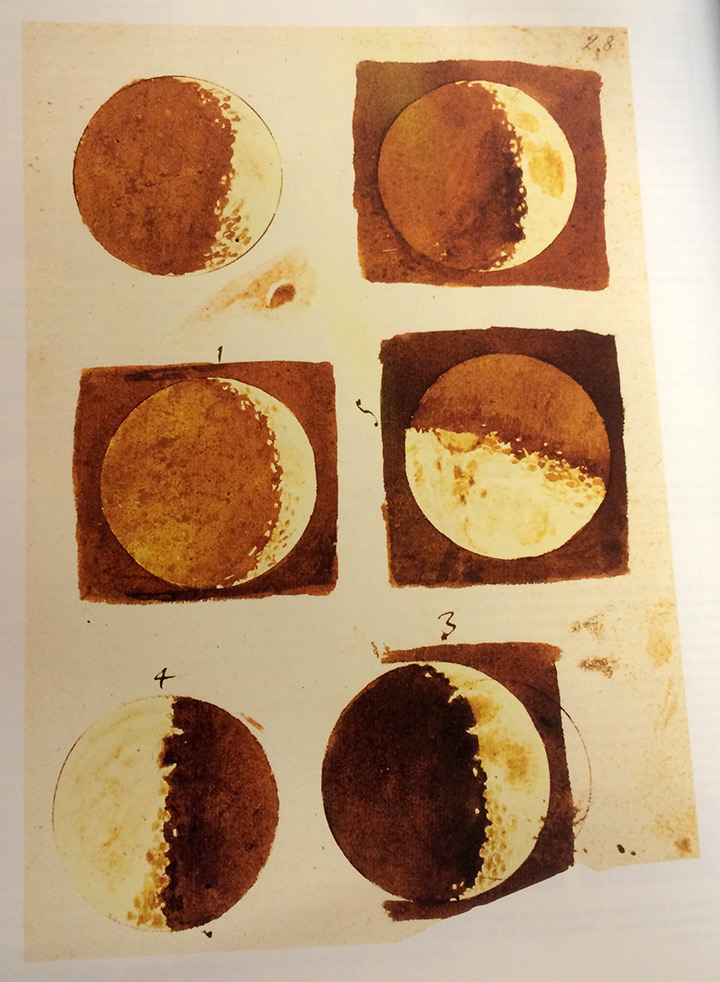
A photograph of the reproduction of Galileo Galilei's Disegni della Luna, novembre-dicembre 1609, Firenze, Biblioteca Nazionale Centrale, Ms. Gal. 48, c. 28r, from Tufte's Beautiful Evidence.
Just a note that Pasta Clock (al dente, not al mush) now works on browsers without Adobe Flash installed. Unfortunately there doesn’t seem to be a way for the alarm sound to play on iOS, so I use the default iPhone timer when I can find my phone  .
.

Ferns in spring in Inwood Hill Park, New York City, May 2016.
After eleven years apart, hypertexthero.com (design) and simongriffee.com (photography) were combined into one — this — website. If you came here looking for photographs, don’t worry, those are not going away and regular entries depicting the streets of New York will resume shortly right here in the Notebook (the front page).
A mailing list is still available for my six faithful subscribers, as is an RSS syndication feed, and you can now browse content by keyword, time, location and the randomness of life thanks to Hugo’s wonderful Taxonomies system. Uh oh. Here comes technical talk.
Ready? Deep breath…Go:
I modified a Python script to convert posts living in the hypertexthero.com Django web application’s SQLite database to plain text files to be parsed by the Hugo static website generator. When it worked many students were startled by my jump off a chair while cheering in Columbia’s Science & Engineering Library.
Regular expressions (regexp) — one of my favorite ‘It’s like magic!’ programming tools — were then used to clean up YAML frontmatter dates and URLs. Here they are in the format I used in Textmate 2’s Find and Replace dialogue, making sure the Regular Expression option is checked:
To Convert: /notebook/2010/06/20/soccer-field-from-train/
Into: /notebook/soccer-field-from-train/
Find: (url: \/notebook)(.+?)(\/[a-z%\-])
Replace: $1$3
To Convert: /notebook/2011/11/15/GRS-20111025-113153/
Into: /notebook/GRS-20111025-113153/
Find: (url: \/notebook)(.+?)(\/GRS\-\d{8}\-\d{6}\/)
Replace: $1$3
To Convert: date: 2005-09-20 03:31:00
Into: `date: 2005-09-20T03:31:00Z
2005:
Find: (date: \d{4}\-\d{2}-\d{2})(.+?)(\d{2}\:\d{2}\:\d{2})
Replace: $1T$3Z
I don’t like Go’s syntax much and was bewildered by its time reference format for some time. But it’s fast. The site takes around 40 seconds to generate with twice the number of entries (both photography and design) compared to ~10 minutes with Jekyll and half the entries (only photography).
Google App Engine will soon be hosting these words once I figure out how to get shit secure there with Lets Encrypt. A friend says its ‘overkill’ for hosting a small site, but I like to learn and am enjoying playing with Google’s infrastructure. Its also free for small sites. Not sure I’ll still be able to deploy with rsync, but Google’s command line SDK is quite nice. Lets see.
Having everything in one place with a fast publishing workflow with Hugo and version control with Git and GitHub GitLab feels good and makes buzzwords like continuous integration and continuous deployment real in my own little home on the net. I suspect I’ll always be an advanced beginner coding for the web — on the shore of an ocean, walking through forests of abstractions. That’s the fun of it: The journey never ends.
Thanks, dearest visitor, as always, for visiting my website! You should consider publishing your own so that the big company with the blue logo doesn’t take over the internet, and I’ll be writing a guide and providing a Hugo theme to help you do just that, shortly.
—Simon









